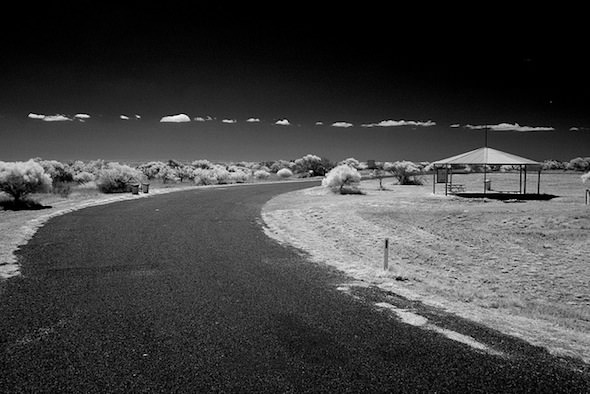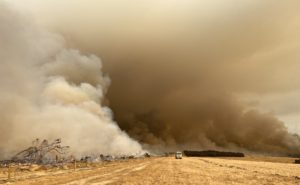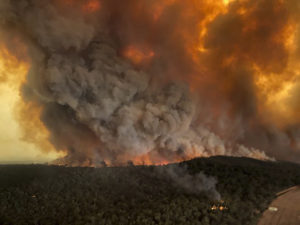Human Activities ‘Caused Record Oz Heat’
Human activities made last year's record-breaking hot summer in Australia five times more likely than it would otherwise have been, meteorologists report.
By Alex Kirby, Climate News NetworkThis piece first appeared at Climate News Network.
LONDON — Australian researchers are in no doubt about what happened there last year. The country’s Bureau of Meteorology is a model of clarity: “2013 was Australia’s warmest year on record. Persistent and widespread warmth throughout the year led to record-breaking temperatures and several severe bushfires. Nationally-averaged rainfall was slightly below average.”
Now two Australian scientists say it is virtually certain that no records would have been broken had it not been for the influence on the climate of humans. They even put a figure on it: people, they say, raised the stakes about five times.
The World Meteorological Organization devotes a section in its report, WMO statement on the status of the global climate in 2013, to the scientists’ peer-reviewed case study, undertaken by a team at the ARC Centre of Excellence for Climate System Science at the University of Melbourne. It was adapted from an article originally published in the journal Geophysical Research Letters,
The study used nine global climate models to investigate whether changes in the probability of extreme Australian summer temperatures were due to human influences.
More frequent extremes ahead
It concluded: “Comparing climate model simulations with and without human factors shows that the record hot Australian summer of 2012/13 was about five times as likely as a result of human-induced influence on climate, and that the record hot calendar year of 2013 would have been virtually impossible without human contributions of heat-trapping gases, illustrating that some extreme events are becoming much more likely due to climate change.”
The report also strikes a warning note: “These types of extreme Australian summers become even more frequent in simulations of the future under further global warming.”.
It says last year was notable as well because it was marked by what scientists call “neutral to weak La Niña ENSO conditions”, which would normally be expected to produce cooler temperatures across Australia, not hotter. El Niño is characterized by unusually warm temperatures and La Niña by unusually cool ones in the equatorial Pacific.
Before 2013 six of the eight hottest Australian summers occurred during El Niño years. The WMO says natural ENSO variations are very unlikely to explain the record 2013 Australian heat.
Introducng the report the WMO secretary-general, Michel Jarraud, said many of the extreme events of 2013 were consistent with what we would expect as a result of human-induced climate change. And he repeated his insistence that claims of a pause in climate change were mistaken.
“There is no standstill in global warming. The warming of our oceans has accelerated, and at lower depths. More than 90% of the excess energy trapped by greenhouse gases is stored in the oceans.
“Levels of these greenhouse gases are at record levels, meaning that our atmosphere and oceans will continue to warm for centuries to come. The laws of physics are non-negotiable.”
The report says 13 of the 14 warmest years on record have all occurred during this century, and each of the last three decades has been warmer than the previous one, culminating with 2001-2010 as the warmest decade on record. It confirms that 2013 tied with 2007 as the sixth warmest year on record, continuing the long-term global warming trend.
Temperatures in many parts of the southern hemisphere were especially warm, and Australia was not the only country to feel the impact: Argentina had its second hottest year on record.
Your support matters…Independent journalism is under threat and overshadowed by heavily funded mainstream media.
You can help level the playing field. Become a member.
Your tax-deductible contribution keeps us digging beneath the headlines to give you thought-provoking, investigative reporting and analysis that unearths what's really happening- without compromise.
Give today to support our courageous, independent journalists.








You need to be a supporter to comment.
There are currently no responses to this article.
Be the first to respond.